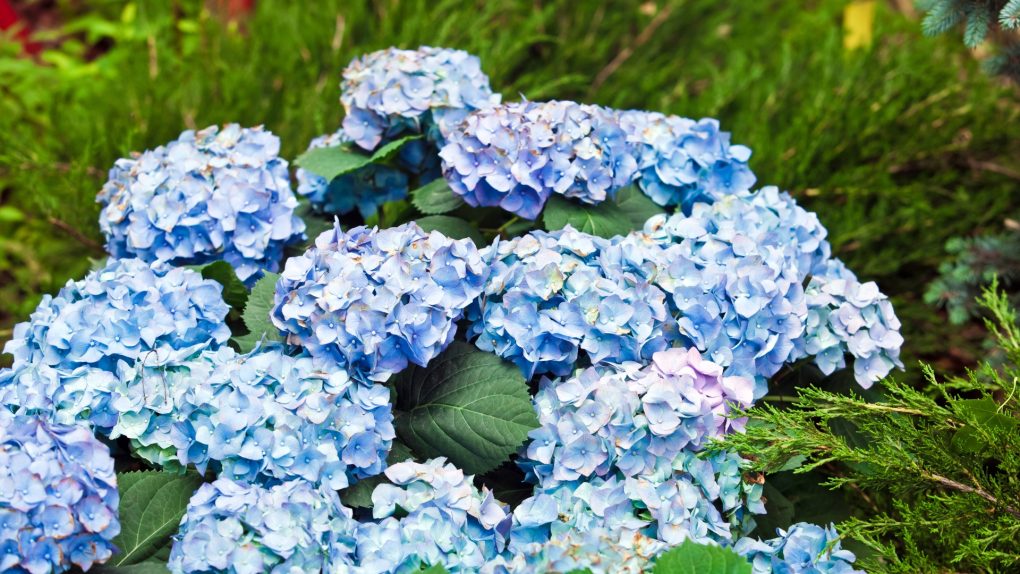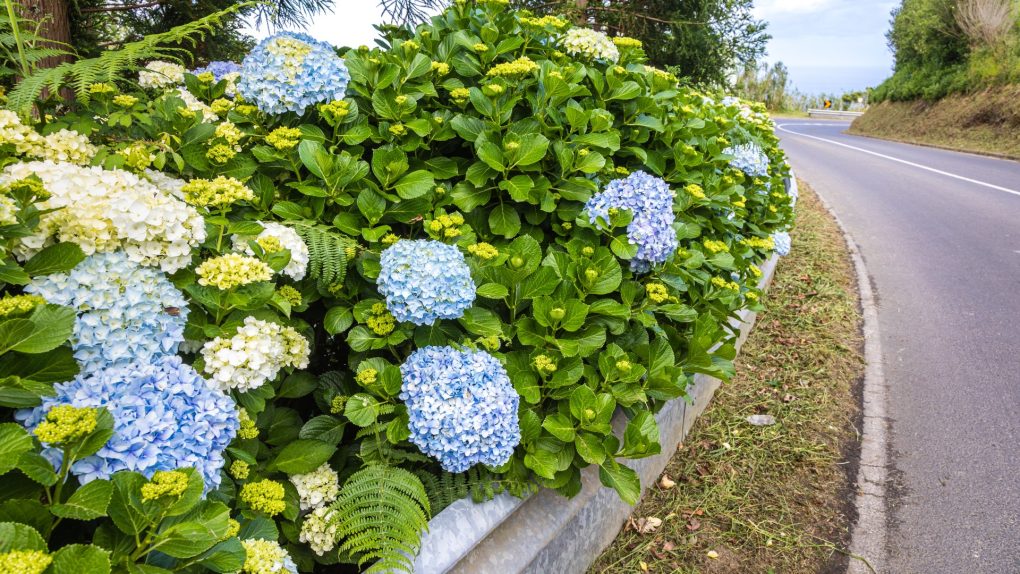Hydrangea Soil Preferences: Acidic or Alkaline?
Hydrangeas generally prefer acidic soil with a pH level of 5.0 to 5.5. In this environment, the plants can absorb aluminum, which affects the flower color and promotes healthy growth. However, some species, such as Hydrangea paniculata and Hydrangea quercifolia, are more adaptable and can tolerate alkaline soils.

The soil pH influences the flower color in some hydrangeas, mainly the bigleaf hydrangeas (H. macrophylla). In acidic soil, flowers turn blue, whereas in alkaline soil, they produce pink blooms. Adjusting the pH of your garden soil can help to achieve the desired flower color and ensure your hydrangeas thrive.
Table of Contents
Hydrangea Soil Preferences
Hydrangeas are a popular flowering shrub that can add color and beauty to any garden. However, to get the most out of your hydrangeas, it is important to understand their soil preferences. This section will explore the acidity levels and other soil factors that hydrangeas prefer.
Acidity Levels
It is well-known that hydrangea flowers change color according to the pH level of the soil. The flowers will be blue if the soil is acidic, and pink if the soil is alkaline. These plants prefer a pH level between 5.5 and 7.5, which is slightly acidic to neutral.
If you want to change your hydrangeas color, you can adjust the soil’s acidity level. Adding aluminum sulfate to the soil will make it more acidic and produce blue flowers. On the other hand, adding lime to the soil will make it more alkaline and produce pink flowers.
Other Soil Factors
Aside from acidity levels, other soil factors can affect the growth and health of hydrangeas. For example, hydrangeas prefer well-draining soil that is rich in organic matter. They also require consistent moisture throughout the growing season.
Planting hydrangeas in a new location requires the soil to be prepared properly. This includes adding compost or other organic matter to improve fertility and structure and testing and adjusting the pH level.
Overall, understanding the soil preferences of hydrangeas is essential for growing healthy and vibrant plants. You can enjoy beautiful blooms year after year by providing the right conditions.

Acidifying Soil for Hydrangeas
Hydrangeas prefer slightly acidic soil with a pH range of 5.5 to 7.5. If the soil is too alkaline, the flowers will turn pink, while acidic soil will produce blue flowers. Gardeners who want to grow blue hydrangeas may need to acidify their soil. Here are some methods to acidify soil for hydrangeas:
Methods for Acidifying Soil
There are several ways to acidify soil for hydrangeas:
- Sulfur: Sulfur is a common soil amendment that can lower pH levels. It is available in powder or pellet form and can be applied to the soil surface or mixed into the soil. It is best to apply sulfur in the fall or winter, so it has time to break down before planting hydrangeas.
- Aluminum Sulfate: Aluminum sulfate is another soil amendment that can lower pH levels. It is available in powder or granular form and can be applied to the soil surface or mixed into the soil. It is best to apply aluminum sulfate in the spring before planting hydrangeas.
- Organic Matter: Adding organic matter such as compost, peat moss, or pine needles can help lower pH levels. Organic matter should be mixed into the soil before planting hydrangeas.
- Vinegar: White vinegar can acidify soil but should be used sparingly. Mix one tablespoon of vinegar per gallon of water and water the hydrangeas with the solution once a month.
Considerations for Acidifying Soil
While acidifying soil can help produce blue hydrangea flowers, it is important to consider some factors:
- Soil Testing: It is important to test the soil pH level before acidifying soil. Over-acidification can harm plants and soil organisms. For example, gardeners can use a soil test kit or send a soil sample to a lab for analysis.
- Hydrangea Variety: Not all hydrangea varieties produce blue flowers, even in acidic soil. Gardeners should choose hydrangeas that produce blue flowers in acidic soil, such as Bigleaf hydrangeas.
- Environmental Impact: Overusing sulfur and aluminum sulfate can harm soil organisms and contribute to acid rain. Gardeners should use these amendments sparingly and consider organic methods of acidification.
Planting and Maintaining Hydrangeas in Acidic Soil
Planting Hydrangeas in Acidic Soil
Hydrangeas are known for their beautiful blooms, but did you know that the color of the blooms can be affected by the pH of the soil? If you want to achieve blue blooms, plant hydrangeas in acidic soil with a pH of 5.0 to 5.5. Here are tips for planting hydrangeas in acidic soil:
- Test the soil pH before planting to ensure it is within the optimal range.
- If the soil is not acidic enough, you can lower the pH by adding sulfur or other acidifying agents.
- Choose a planting location that receives partial sun to ensure the soil stays moist but not soggy.
- Dig a hole twice as wide as the root ball and slightly shallower than its depth.
- Backfill the hole with soil and organic matter, such as compost or peat moss.
- Once the plant is planted, water it thoroughly and keep the soil moist but not soggy.
Maintaining Hydrangeas in Acidic Soil
Once you have planted your hydrangeas in acidic soil, it is important to maintain the soil pH to ensure the blooms remain blue. Here are some tips for maintaining hydrangeas in acidic soil:
- Test the soil pH regularly to ensure it remains within the optimal range.
- If the soil pH rises, you can lower it by adding sulfur or other acidifying agents.
- Water the plant regularly to ensure the soil stays moist but not waterlogged.
- Fertilize the plant with a fertilizer formulated for acid-loving plants, such as rhododendrons or azaleas.
- Prune the plant in late winter or early spring to remove dead or damaged branches and encourage new growth.

Following these tips, you can plant and maintain hydrangeas in acidic soil to achieve beautiful blue blooms.
